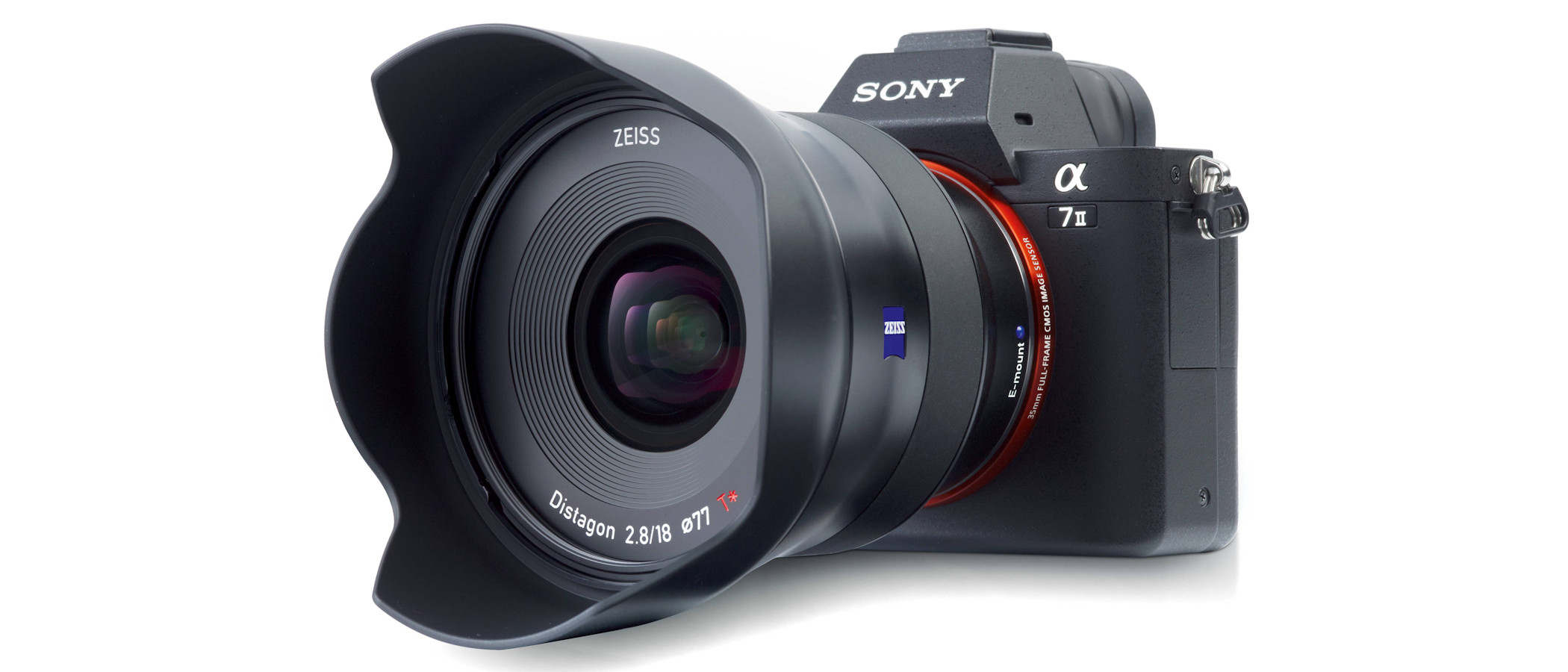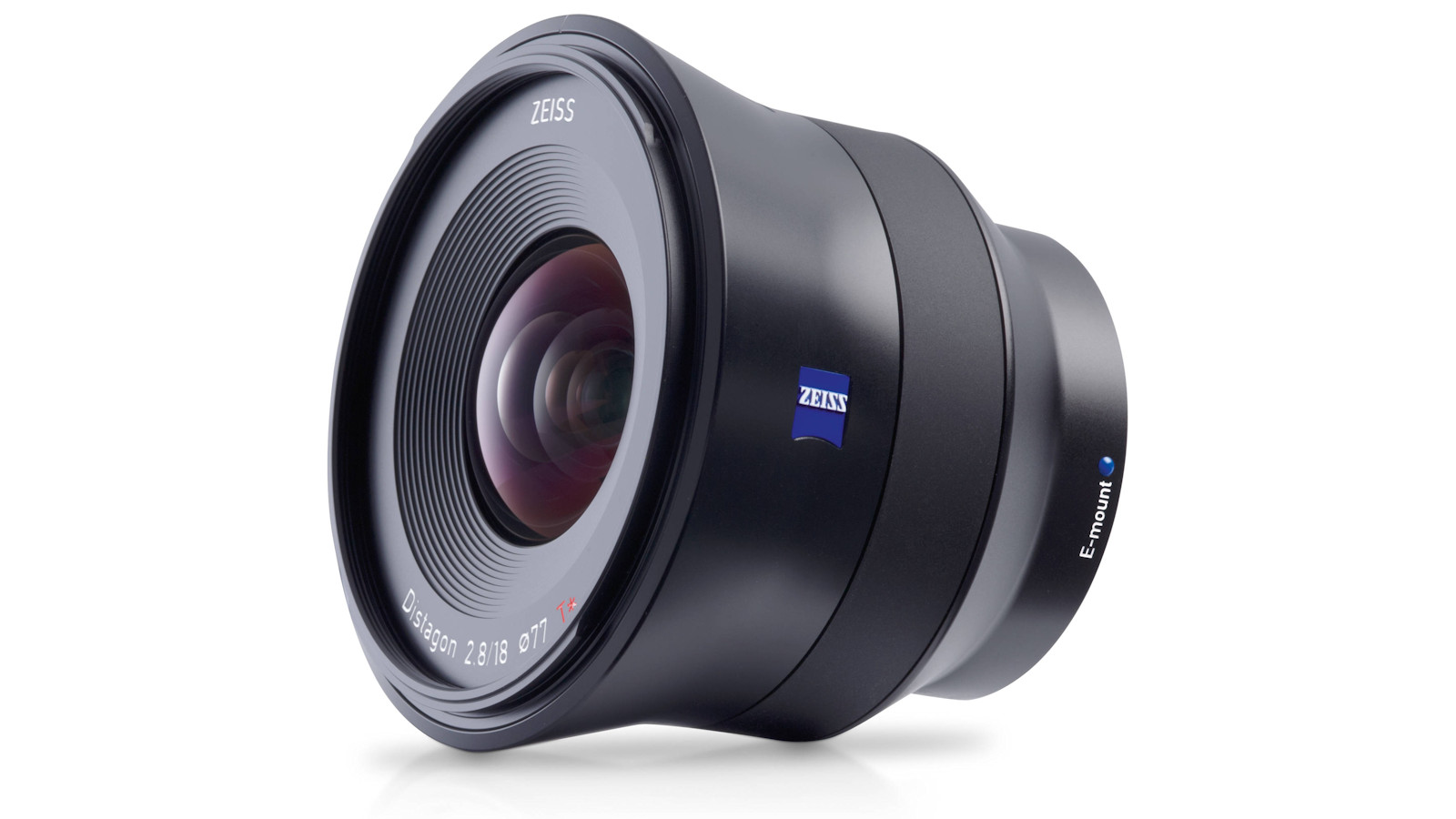Digital Camera World Verdict
I like that the Zeiss Batis 18mm f/2.8 gives me an ultra-wide-angle perspective and that, while the f/2.8 aperture isn’t exactly ‘fast’, it enables a reasonably small and lightweight build. Unlike most Zeiss lenses, it has autofocus and even an OLED display. Image quality and performance are mostly fabulous and the lens is a joy to use, but it’s pricey to buy and sharpness at the extreme edges and corners of the frame could be better.
Pros
- +
Quick, virtually silent autofocus
- +
OLED display
- +
Mostly excellent image quality
Cons
- -
Mediocre edge-sharpness
- -
Modest aperture rating
- -
Pricey to buy
Why you can trust Digital Camera World
The Zeiss Batis 18mm F2.8 is from a family of Zeiss lenses named after a sub-Saharan flycatching bird. They’re all made specifically for Sony E-mount mirrorless cameras and a full-frame compatible, although naturally can also be used on Sony’s APS-C format E-mount bodies. The 18mm is the most wide-angle lens in the line-up, while siblings include the 24mm f/2, 40mm f/2 CF (Close Focus), 85mm f/1.8 and 135mm f/2.8. That covers most bases.
Specifications
| Mount options | Sony E (FE) |
| Lens construction | 11 elements in 10 groups |
| Angle of view | 99 degrees |
| Focus type | Autofocus |
| Minimum aperture | f/22 |
| Minimum focus distance | 0.25m |
| Maximum magnification | 0.11x |
| Filter size | 77mm |
| Dimensions | 100x80mm |
| Weight | 330g |
Key features
King of the feature list is that ultra-wide 99-degree viewing angle, as measured on the diagonal of the frame. It’s ideal for everything from sweeping landscape vistas and cityscapes to cramped architectural interiors. You can also get in really close to subjects and exaggerate the perspective between foreground and background objects for creative effect. In fact, with a minimum focus distance of just 0.25m (0.17m from the front of the lens), extreme close-ups are on the cards as well, where the f/2.8 aperture gives a fairly tight depth of field. Although it’s not particularly fast compared with some f/1.8 or even f/1.4 ultra-wide-angle lenses, the lens is nevertheless fast enough for astrophotography, adding another string to its bow.
Think Zeiss prime lenses and you’re probably thinking of manual-focus affairs. That’s certainly the case with popular Loxia, Milvus, Otus and other classic Zeiss lens families. However, like the Zeiss Touit series of APS-C format lenses for Fujifilm X-mount as well as Sony E-mount cameras, all Batis full-frame lenses are autofocus optics. As with most lenses for mirrorless cameras, autofocus is driven by a linear stepping motor. This enables fast performance for stills, along with smooth, virtually silent focus transitions when shooting video. As usual, the manual focus ring is electronically coupled to the stepping motor, requiring power from the camera to drive it.
A more unusual feature of this and other Batis lenses is that they have an OLED display built into the top of the lens barrel. I like that it gives a ready readout of focus distance, complete with an indication of the depth of field. That’s something that I often miss in ‘mirrorless’ lenses, which typically have no focus distance scale. Build quality feels very solid, even though it’s not one of Zeiss’s more usual metal-bodies lenses, and extensive weather-seals are incorporated.
Performance
Image quality is deeply satisfying. The lens is based on Zeiss’s ‘Distagon’ design principles, which first saw the light back in 1952. The optical path includes four aspherical elements and no less than seven anomalous partial dispersion elements, boosting clarity and sharpness while minimizing aberrations. Zeiss’s legendary T* anti-reflective coating is on hand to minimize ghosting and flare, while enhancing contrast. Levels of sharpness across almost the whole image frame are absolutely spectacular, although sharpness drops off at the extreme edges and corners of the image frame. Color fringing and distortion are minimal, although vignetting can be noticeable, especially at wide aperture settings.
Lab results
We run a range of lab tests under controlled conditions, using the Imatest Master testing suite. Photos of test charts are taken across the range of apertures and zooms (where available), then analyzed for sharpness, distortion and chromatic aberrations.
We use Imatest SFR (spatial frequency response) charts and analysis software to plot lens resolution at the center of the image frame, corners and mid-point distances, across the range of aperture settings and, with zoom lenses, at four different focal lengths. The tests also measure distortion and color fringing (chromatic aberration).
Sharpness:
Sharpness is absolutely stellar across almost the entire image frame, especially wide-open at f/2.8. At narrower settings, sharpness drops off towards the extreme edges and corners of the frame, but that’s by no means uncommon for such an ultra-wide-angle lens.
Fringing:
There’s a little lateral chromatic aberration towards the edges and corners of the image frame but it’s of a low order and well with the remit of automatic in-camera correction of Sony mirrorless cameras.
Distortion: -0.31
Many wide-angle lenses designed for mirrorless cameras rely entirely on automatic in-camera correction for distortion but the Batis 18mm delivers very minimal barrel distortion, even when uncorrected.
The best camera deals, reviews, product advice, and unmissable photography news, direct to your inbox!
Verdict
I like that the Zeiss Batis 18mm F2.8 gives me an ultra-wide-angle perspective and that, while the f/2.8 aperture isn’t exactly ‘fast’, it enables a reasonably small and lightweight build. Unlike most Zeiss lenses, it has autofocus and even an OLED display. Image quality and performance are mostly fabulous and the lens is a joy to use, but it’s pricey to buy and sharpness at the extreme edges and corners of the frame could be better.
Matthew Richards is a photographer and journalist who has spent years using and reviewing all manner of photo gear. He is Digital Camera World's principal lens reviewer – and has tested more primes and zooms than most people have had hot dinners!
His expertise with equipment doesn’t end there, though. He is also an encyclopedia when it comes to all manner of cameras, camera holsters and bags, flashguns, tripods and heads, printers, papers and inks, and just about anything imaging-related.
In an earlier life he was a broadcast engineer at the BBC, as well as a former editor of PC Guide.








